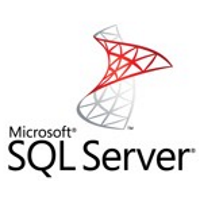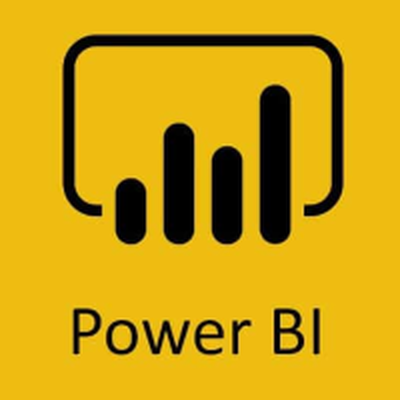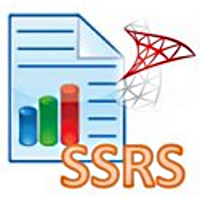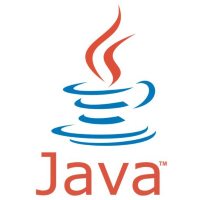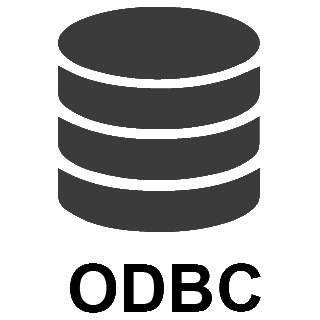How to Get report — YouTube Connector for SSIS
Prerequisites
Before we begin, make sure the following prerequisites are met:
- SSIS designer installed. Sometimes it is referred as BIDS or SSDT (download it from Microsoft).
- Basic knowledge of SSIS package development using Microsoft SQL Server Integration Services.
- SSIS PowerPack is installed (if you are new to SSIS PowerPack, then get started!).
Get report in SSIS
-
Begin with opening Visual Studio and Create a New Project.
-
Select Integration Service Project and in new project window set the appropriate name and location for project. And click OK.
In the new SSIS project screen you will find the following:
- SSIS ToolBox on left side bar
- Solution Explorer and Property Window on right bar
- Control flow, data flow, event Handlers, Package Explorer in tab windows
- Connection Manager Window in the bottom
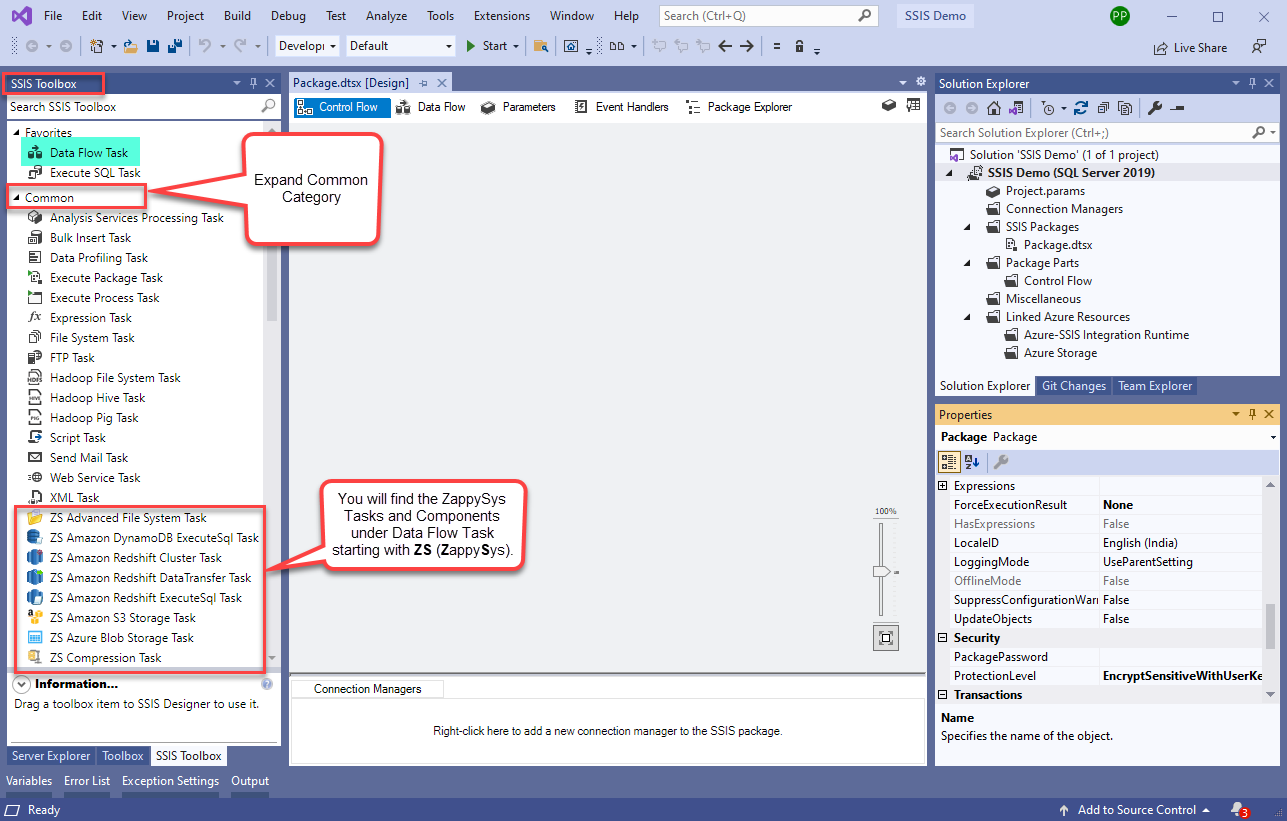 Note: If you don't see ZappySys SSIS PowerPack Task or Components in SSIS Toolbox, please refer to this help link.
Note: If you don't see ZappySys SSIS PowerPack Task or Components in SSIS Toolbox, please refer to this help link. -
Now, Drag and Drop SSIS Data Flow Task from SSIS Toolbox. Double click on the Data Flow Task to see Data Flow designer.
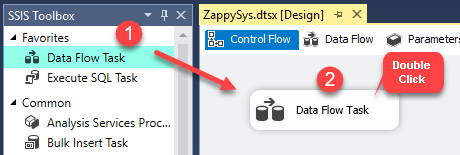
-
From the SSIS toolbox drag and API Source (Predefined Templates) on the data flow designer surface, and double click on it to edit it:
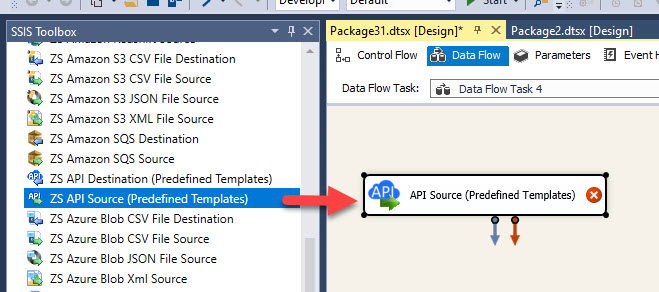
-
Select New Connection to create a new connection:
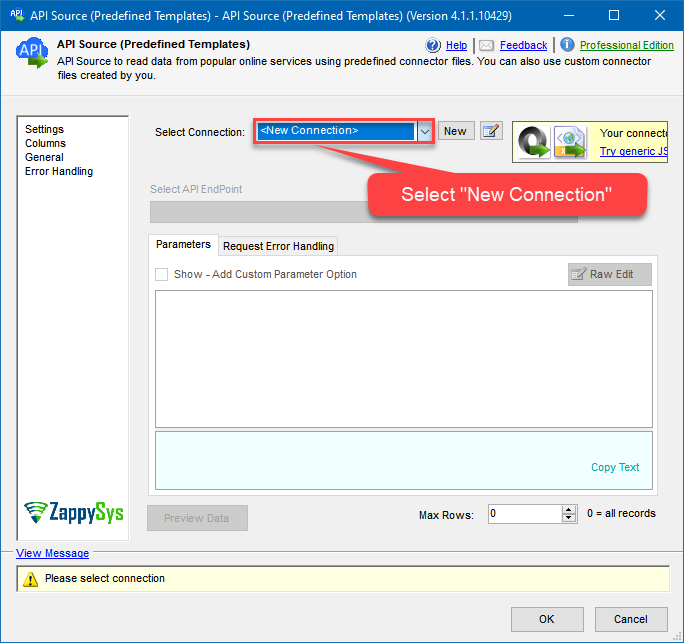
-
Use a preinstalled YouTube Connector from Popular Connector List or press Search Online radio button to download YouTube Connector. Once downloaded simply use it in the configuration:
YouTube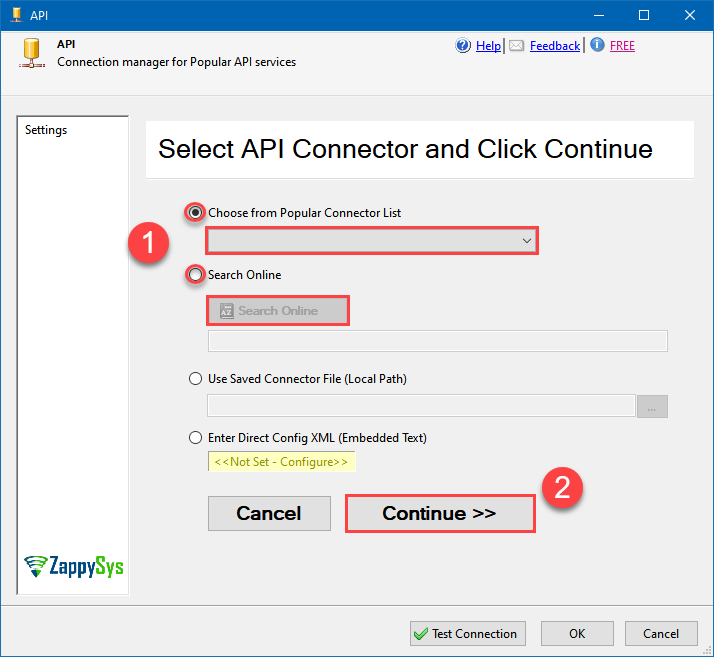
-
Now it's time to configure authentication. Firstly, configure authentication settings in YouTube service and then proceed by configuring API Connection Manager. Start by expanding an authentication type:
YouTube authentication
This walkthrough will help you create an API Key which you will be able to use in all requests and authenticate accordingly.- Go to Google API Console
- From the Project Dropdown (usually found at the top bar) click Select Project
- On Project Popup click CREATE PROJECT
- Once project is created you can click Select Project to switch the context (You can click on Notification link or Choose from Top Dropdown)
- Click ENABLE APIs AND SERVICES
- Now we need to Enable three APIs one by one (YouTube Data API, YouTube Analytics API, YouTube Reporting API).
- Search YouTube Data API. Select and click ENABLE
- Search YouTube Analytics API. Select and click ENABLE
- Search YouTube Reporting API. Select and click ENABLE
- Go to back to main screen of Google API Console
- Click OAuth Consent Screen Tab. Enter necessary details and Save.
- Click Credentials Tab
- Click CREATE CREDENTIALS (some where in topbar) and select API key option.
- In the popup, copy API Key from the field "Your API key", close this window, and use it in the UI configuration, "key" field
API Connection Manager configuration
Just perform these simple steps to finish authentication configuration:
-
Set Authentication Type to
API Key [Http] - Optional step. Modify API Base URL if needed (in most cases default will work).
- Fill in all the required parameters and set optional parameters if needed.
- Finally, hit OK button:
YouTubeAPI Key [Http]https://youtube.googleapis.com/youtube/v3Required Parameters key Fill-in the parameter... Optional Parameters RetryMode RetryWhenStatusCodeMatch RetryStatusCodeList 403|429 RetryCountMax 5 RetryMultiplyWaitTime True 
YouTube authentication
To register a custom app, perform the following steps (detailed steps found in the help link at the end)- Go to Google API Console
- From the Project Dropdown (usually found at the top bar) click Select Project
- On Project Popup click CREATE PROJECT
- Once project is created you can click Select Project to switch the context (You can click on Notification link or Choose from Top Dropdown)
- Click ENABLE APIs AND SERVICES
- Now we need to Enable three APIs one by one (YouTube Data API, YouTube Analytics API, YouTube Reporting API).
- Search YouTube Data API. Select and click ENABLE
- Search YouTube Analytics API. Select and click ENABLE
- Search YouTube Reporting API. Select and click ENABLE
- Go to back to main screen of Google API Console
- Click OAuth Consent Screen Tab. Enter necessary details and Save.
- Click Credentials Tab
- Click CREATE CREDENTIALS (some where in topbar) and select OAuth Client ID option.
- When prompted Select Application Type as Desktop App and click Create to receive your ClientID and Secret. Later on you can use this information now to configure Connection.
- Go to OAuth Consent Screen tab. Under Publishing Status click PUBLISH APP to ensure your refresh token doesnt expire often. If you planning to use App for Private use then do not have to worry about Verification Status after Publish.
API Connection Manager configuration
Just perform these simple steps to finish authentication configuration:
-
Set Authentication Type to
User Account [OAuth] - Optional step. Modify API Base URL if needed (in most cases default will work).
- Fill in all the required parameters and set optional parameters if needed.
- Press Generate Token button to generate the tokens.
- Finally, hit OK button:
YouTubeUser Account [OAuth]https://youtube.googleapis.com/youtube/v3Optional Parameters ClientId ClientSecret Scope https://www.googleapis.com/auth/youtube https://www.googleapis.com/auth/youtube.readonly https://www.googleapis.com/auth/youtubepartner https://www.googleapis.com/auth/youtube.force-ssl https://www.googleapis.com/auth/youtube.upload https://www.googleapis.com/auth/youtubepartner-channel-audit https://www.googleapis.com/auth/yt-analytics-monetary.readonly https://www.googleapis.com/auth/yt-analytics.readonly RetryMode RetryWhenStatusCodeMatch RetryStatusCodeList 403|429 RetryCountMax 5 RetryMultiplyWaitTime True Redirect URL (Only for Web App) 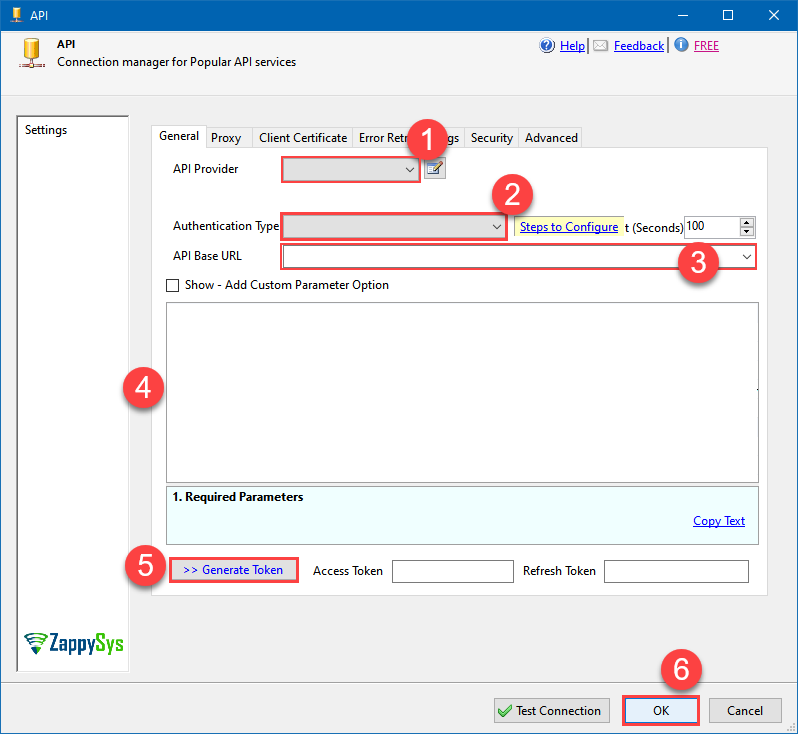
YouTube authentication
Use these steps to authenticate as service account rather than Google / GSuite User. Learn more about service account here Basically to call Google API as Service account we need to perform following steps listed in 3 sections (Detailed steps found in the help link at the end)Create Project
First thing is create a Project so we can call Google API. Skip this section if you already have Project (Go to next section)- Go to Google API Console
- From the Project Dropdown (usually found at the top bar) click Select Project
- On Project Popup click CREATE PROJECT
- Once project is created you can click Select Project to switch the context (You can click on Notification link or Choose from Top Dropdown)
- Click ENABLE APIs AND SERVICES
- Now we need to Enable three APIs one by one (YouTube Data API, YouTube Analytics API, YouTube Reporting API)
- Search YouTube Data API. Select and click ENABLE
- Search YouTube Analytics API. Select and click ENABLE
- Search YouTube Reporting API. Select and click ENABLE
Create Service Account
Once Project is created and APIs are enabled we can now create a service account under that project. Service account has its ID which looks like some email ID (not to confuse with Google /Gmail email ID)- Go to Create Service Account
- From the Project Dropdown (usually found at the top bar) click Select Project
- Enter Service account name and Service account description
- For Role, do not select anything for now and Click Continue and then click Done. Next we will create Key.
Create Key
Once service account is created we need to create key file (i.e. credentials).- In the Cloud Console, click the email address for the service account that you created.
- Click Keys.
- Click Add key, then click Create new key.
- Click Create and select P12 format. A P12 key file is downloaded to your computer. We will use this file in our API connection.
- Click Close.
- Now you may use downloaded *.p12 key file as secret file and Service Account Email as Client ID (e.g. some-service-account-name@your-project-id.iam.gserviceaccount.com ).
Add Permission
Now last thing is give read/write permission to Service Account. Basically you can create or open Google Sheet and add the Service Account as an editor to it as below.- Copy the email address of your service account we created in previous step (its usually like this some-service-account-name@your-project-id.iam.gserviceaccount.com).
- Create or select an existing Google Sheet.
- Navigate to Sheet for which you like to give read/write access to Service Account.
- Click on the Share button in the top right, and add the email address of the service account as an editor. Here is how to share file(s) with specific people. Juse share with Service Account (use Service Account Email found on previous section)
API Connection Manager configuration
Just perform these simple steps to finish authentication configuration:
-
Set Authentication Type to
Service Account (Using *.json OR *.p12 key file) [OAuth] - Optional step. Modify API Base URL if needed (in most cases default will work).
- Fill in all the required parameters and set optional parameters if needed.
- Press Generate Token button to generate the tokens.
- Finally, hit OK button:
YouTubeService Account (Using *.json OR *.p12 key file) [OAuth]https://youtube.googleapis.com/youtube/v3Required Parameters Service Account Email Fill-in the parameter... Service Account Private Key Path (i.e. *.p12) Fill-in the parameter... Optional Parameters Scope https://www.googleapis.com/auth/youtube https://www.googleapis.com/auth/youtube.readonly https://www.googleapis.com/auth/youtubepartner https://www.googleapis.com/auth/youtube.force-ssl https://www.googleapis.com/auth/youtube.upload https://www.googleapis.com/auth/youtubepartner-channel-audit https://www.googleapis.com/auth/yt-analytics-monetary.readonly https://www.googleapis.com/auth/yt-analytics.readonly RetryMode RetryWhenStatusCodeMatch RetryStatusCodeList 403|429 RetryCountMax 5 RetryMultiplyWaitTime True 
-
Select Get report endpoint from the dropdown and hit Preview Data:
API Source - YouTubeRead / write YouTube data inside your app, perform many Youtube operations without coding using easy to use high performance API Connector for YouTubeYouTubeGet reportRequired Parameters ids Fill-in the parameter... metrics Fill-in the parameter... Start Date (yyyy-MM-dd) Fill-in the parameter... End Date (yyyy-MM-dd) Fill-in the parameter... Optional Parameters ArrayTransformType TransformSimpleTwoDimensionalArray ArrayTransColumnNameFilter $.columnHeaders[*].name ArrayTransRowValueFilter $.rows[*] currency dimensions filters includeHistoricalChannelData maxResults 50 sort 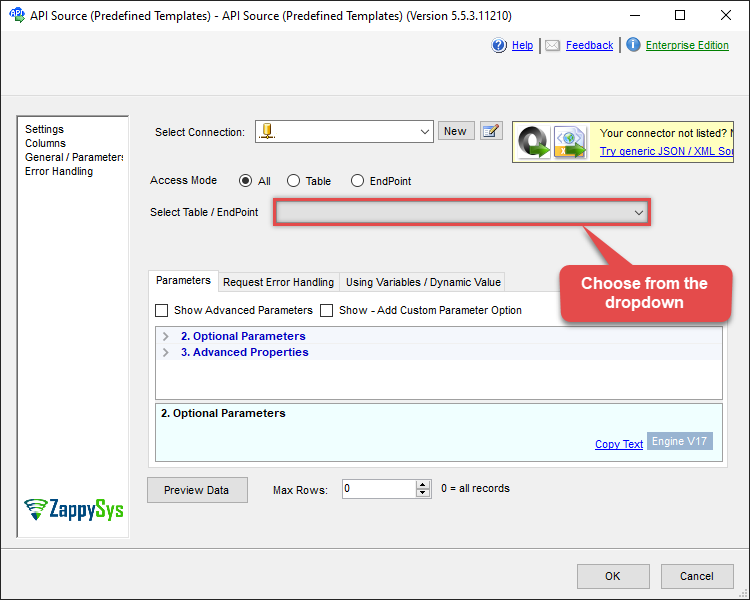
-
That's it! We are done! Just in a few clicks we configured the call to YouTube using YouTube Connector.
You can load the source data into your desired destination using the Upsert Destination , which supports SQL Server, PostgreSQL, and Amazon Redshift. We also offer other destinations such as CSV , Excel , Azure Table , Salesforce , and more . You can check out our SSIS PowerPack Tasks and components for more options. (*loaded in Trash Destination)
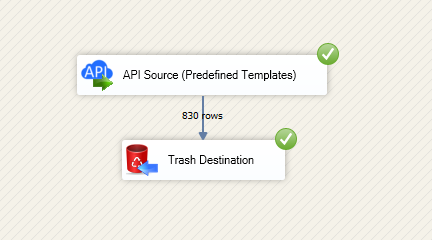
More actions supported by YouTube Connector
Learn how to perform other actions directly in SSIS with these how-to guides:
- Get channels
- Get comments
- Get playlist items
- Get playlists
- Get video details
- Get videos
- Get videos rating
- Search
- Make Generic API Request
- Make Generic API Request (Bulk Write)

